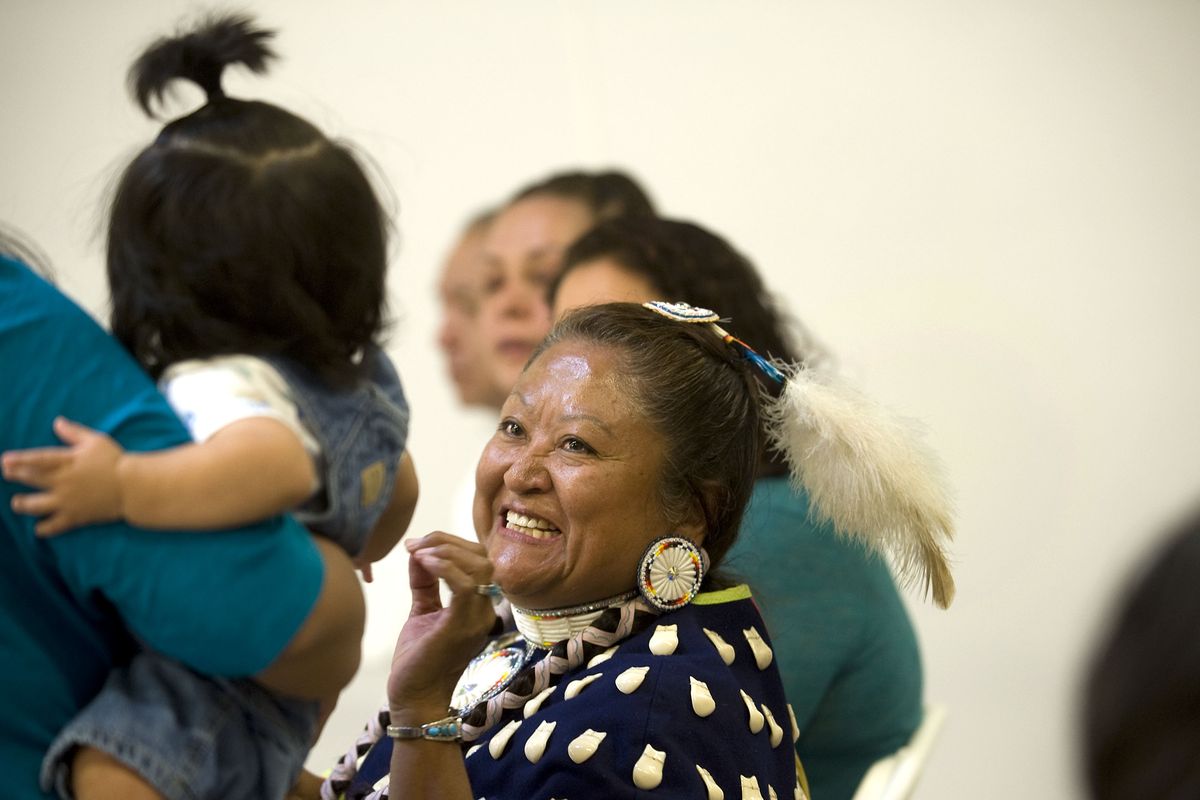Twin Rivers Hatchery dedicated
Kootenai Tribe dedicates hatchery to restore white sturgeon, burbot

MOYIE SPRINGS, Idaho – White sturgeon in the Kootenai River can live for decades and grow to lengths of 8 feet.
The bottom-dwelling fish share the river’s rocky depths with burbot, a pugnacious, freshwater cod.
On Thursday, the Kootenai Tribe of Idaho dedicated a $15 million hatchery with the goal of restoring the two iconic fish species, whose populations have plummeted since the construction of Libby Dam during the 1970s.
“The sturgeon and the burbot both are so unique,” said Sue Ireland, the tribe’s fish and wildlife director. “They’re important culturally to the tribe. They’re important socially to the community. And they’re important to the river.”
Sturgeon were revered as spiritual messengers by the tribe, and burbot provided an important regional fishery. The delicate-flavored fish was known locally as “poor man’s lobster.”
Thursday’s dedication was a festive occasion, with drumming and singing, speeches by Idaho’s two U.S. senators, and tours of the 35,000-square foot hatchery, located at the confluence of the Kootenai and Moyie rivers. The audience included a cross section of the local community.
U.S. Sen. Mike Crapo praised the tribe’s work at consensus-building on thorny resource issues, which has led to broad support for restoring native fish in the Kootenai River.
“There are solutions that are better for fish, for lands and for the economy,” Crapo said. “My message today is to simply keep at it.”
The new hatchery will expand the tribe’s longstanding efforts to preserve the genetic stock of the endangered Kootenai white sturgeon. The hatchery also will raise burbot for release into the river.
Funding for the hatchery came from the Bonneville Power Administration as mitigation for fish and wildlife habitat lost during the construction of the federal hydropower system.
The Kootenai Tribe’s sturgeon conservation work is widely known, said Gary Aitken Jr., the tribe’s chairman: “We’ve been writing the book on sturgeon restoration.”
Now, the tribe will extend that expertise to burbot with the new hatchery, which is believed to be among the first in the world to propagate burbot.
Aitken, 35, grew up on the banks of the Kootenai River. His dad was the tribe’s first hatchery manager. That hatchery, near Bonners Ferry, has been expanded multiple times and will continue operating. It releases more than 10,000 young sturgeon into the river each year. About 15 percent survive their first year, with survival rates increasing to 50 to 90 percent over time.
The new hatchery will provide additional space for sturgeon, with the other half dedicated to burbot. The tribe has been working with the University of Idaho since 2006 to develop a successful burbot aquaculture program.
Burbot are sometimes called “the leopard of the Kootenai” because of their spots.
“They’re a pit bull of a fish,” said Aitken, a former hatchery technician.
Burbot are known for their predatory instincts. An 8-pound burbot can swallow a 3-pound prey fish. And when other food isn’t available, they’ll eat each other.
The new hatchery was designed with the burbot’s cannibalistic tendencies in mind, said Shawn Young, the tribe’s aquaculture program manager. Fish of different sizes will occupy separate tanks.
The first burbot will arrive at the hatchery in February. Since burbot are essentially extinct in the Kootenai River – 50 or fewer wild fish are believed to remain – the hatchery’s brood stock will come from a genetically related population in British Columbia’s Moyie Lake.
Through an agreement with the B.C. government, hatchery technicians will fish for adult burbot, collecting eggs and sperm. The fish will be released back into the lake, and the fertilized eggs will be taken to the hatchery.
Since burbot spawn in winter, the eggs must incubate at temperatures of less than 40 degrees, Young said.
The hatchery’s goal is to release about 125,000 young burbot into the Kootenai River each year.
The tribe’s long-term objective is natural, self-sustaining populations of sturgeon and burbot in the Kootenai River. To that end, the tribe and other agencies have been working to improve fish habitat and flow regimes in the river. But in the meantime, the hatchery is vital to conserving both species, Young said.
“I look forward to the day when perhaps we can fish for burbot here,” said Brad Corkill, a member of Idaho’s Fish and Game Commission.
The tribe’s desire is burbot levels high enough for a recreational fishery.
“It’s an outstanding eating fish,” Young said. “I think it’s better than ocean cod.”